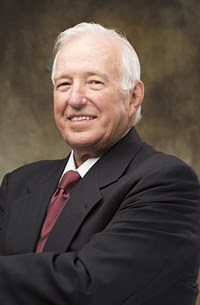 Dr. Robert Skelton, TEES Distinguished Professor in the Department of Aerospace Engineering at Texas A&M University, has been selected to receive the American Institute of Aeronautics and Astronautics (AIAA) Mechanics and Control of Flight Award for 2017. The award, presented for an outstanding recent technical or scientific contribution in the mechanics, guidance or control of flight in space or the atmosphere, honors Skelton’s lasting contributions at the interfaces of mechanics and control of flight and leading the world in analysis, design, modeling and control of tensegrity structures. He received a medal and certificate of citation during a recognition luncheon at the AIAA Science and Technology Forum and Exposition (SciTech 2017) on Jan. 10.
Dr. Robert Skelton, TEES Distinguished Professor in the Department of Aerospace Engineering at Texas A&M University, has been selected to receive the American Institute of Aeronautics and Astronautics (AIAA) Mechanics and Control of Flight Award for 2017. The award, presented for an outstanding recent technical or scientific contribution in the mechanics, guidance or control of flight in space or the atmosphere, honors Skelton’s lasting contributions at the interfaces of mechanics and control of flight and leading the world in analysis, design, modeling and control of tensegrity structures. He received a medal and certificate of citation during a recognition luncheon at the AIAA Science and Technology Forum and Exposition (SciTech 2017) on Jan. 10.
Skelton pioneered the mathematical description of tensegrity structures. Derived by combining tension and integrity, the term tensegrity describes materials composed of strings and rods. His papers have explained the tensegrity nature of the cytoskeleton of red blood cells and of the molecular structure of nature’s strongest tensile material, the spider fiber. Tensegrity materials can change shape by altering their string tension. This ability to adapt allows tensegrity to produce materials systems that can modify their acoustic, electromagnetic or mechanical properties. In addition, tensegrity structures may include built-in actuators, sensors and power-storage devices. This versatility makes tensegrity an attractive alternative to conventional design.
Skelton joined the department in 2015. He became a member of the National Academy of Engineering in 2012. He is a Fellow of the Institute of Electrical and Electronics Engineers, a Fellow of the American Institute of Aeronautics and Astronautics and a life member of the Alexander von Humboldt Foundation, a non-profit foundation in Germany established to promote cooperation in international research.